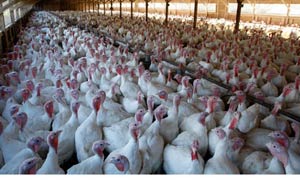In my humble opinion, corn is one of the most important crops on the planet. It is a huge cash crop; we can find corn in many products, from high-fructose corn syrup as food sweeteners to ethanol for cars.
While I am amazed at science's ability to find so many uses for a plant, and that must be considered to be better on our environment than a synthetic alternative, our growing reliance on corn has caused some disturbing trends.
First, we are becoming more dependent on a few crops instead of maintaining a diverse food supply. This year when the Midwest was struck by a drought, the all-important corn crop suffered and I predict we'll see increases in the price of many products as a result. So much food and many other products use corn. It is unfeasible to find an adequate substitute when faced with a corn shortage. Right now ranchers cannot afford the corn feed for their cows, so they are feeding their cows gummy bears, stale candy, and chocolate bars to make up for it. http://www.radioiowa.com/2012/09/27/cattle-producers-use-cast-off-food-products-to-help-supplement-feed/
Corn in Kansas "twists" because of drought.
Corn is a crop heavily dependent on fertilizer. Greater demand for the corn crop and rising prices encourage more farmers to grow it, which in turn increases the amount of fertilizer used. Oh, and by the way, don't forget that most corn grown in the U.S. is a GMO.
More fertilizer for the corn crops of the Midwest means more runoff into our streams, lakes, rivers, and eventually the Gulf of Mexico, which has not had such a good run the last few years. Deepwater Horizon Oil Spill, anyone?? Evidence of our dependence on corn can be found in the Gulf of Mexico's "dead zone". Cause and effect: growing one food crop has killed another one downriver. (There are other crops that also have this effect - they all use up lots of nutrients in the soil and needs lots of fertilizer.)
It seems that once again a solution for one problem - a cheaper food supply and a new, renewable fuel source, has created a different problem with long-lasting effects.
Credit: http://serc.carleton.edu/microbelife/topics/deadzone/advanced.html. Hypoxic zone in the Gulf of Mexico. The brown water is enriched in nutrients and sediments from the Mississippi River. Algal blooms from the enriched water create the hypoxic zone. Image courtesy of Nancy Rabalais (Louisiana Universities Marine Consortium) and can be found on the Southern Regional Water Program web site.


.JPG)




.jpg)



